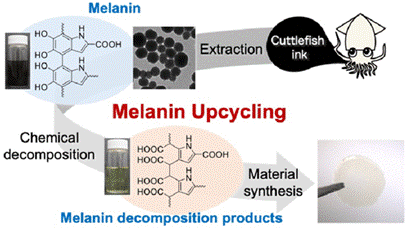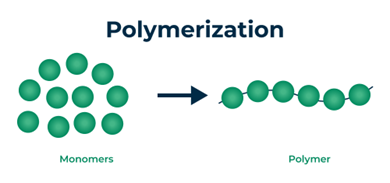Melanin Upcycling – From Pigment to Polymers

Melanin upcycling offers an innovative and eco-friendly approach to developing sustainable materials. By transforming melanin decomposition products, researchers have created novel polymeric materials with a wide range of applications.
Melanin, a natural pigment protecting organisms from UV radiation and oxidative stress, goes through controlled decomposition through chemical, thermal, or enzymatic treatments. This breakdown produces smaller molecules with functional groups suitable for polymerization, enabling their transformation into valuable polymers. Researchers at institutions like Chiba University in Japan, led by Associate Professor Michinari Kohri, are pioneering this field by creating biodegradable polymeric materials from melanin sourced from cuttlefish ink.
You can also read: Switchgrass Bioplastics: Researcher Transforms Sustainable Biomass into Eco-Friendly Alternatives
Creating Value from Nature’s Pigment
The upcycling of melanin decomposition products involves converting these smaller molecules into high-value polymers. This process not only repurposes natural waste products but also aligns with the principles of a circular economy, significantly reducing environmental impact. The unique properties of melanin-derived monomers, such as UV absorption and antioxidative capabilities, add distinctive functionalities to the resulting polymers.

Melanin from Cuttlefish Ink as a Sustainable Biomass Resource. Courtesy of Chiba University.
Melanin upcycling is primarily in the research and experimental stages, with academic institutions leading the way. Researchers have demonstrated that both artificial and natural melanin decompose into pyrrole derivatives containing carboxylic acids, which they then use to produce polymer films and particles. This approach employs a readily available and renewable resource and offers a sustainable solution due to the biodegradable nature of the resulting polymers.
Melanin Polymerization: Crafting Sustainable Advanced Materials

What is Polymerization? Taken from: Polymerization
Polymerization techniques, such as free-radical polymerization, harness melanin’s unique properties to create versatile polymers tailored for specific industrial needs. These melanin-derived polymers offer conductivity and flexibility for advanced electronics, UV absorption for protective coatings and sunscreens, and biocompatibility for biomedical applications like drug delivery systems and tissue engineering scaffolds. Despite the challenges in optimizing efficiency and scalability, ongoing research continues to refine these processes, promising a sustainable future in material science driven by melanin upcycling.
Innovations in Melanin Polymers
Despite the massive potential of melanin-based polymers, challenges in optimizing upcycling processes for efficiency and scalability persist. Ensuring consistent quality and yield of melanin-derived monomers is crucial for commercial success. Researchers are refining decomposition methods and polymerization techniques to enhance performance and broaden the applications of these materials. Embracing melanin upcycling not only drives sustainability but also highlights the innovation shaping the future of material science.
To read more: ACS Sustainable Chemistry Engineering
